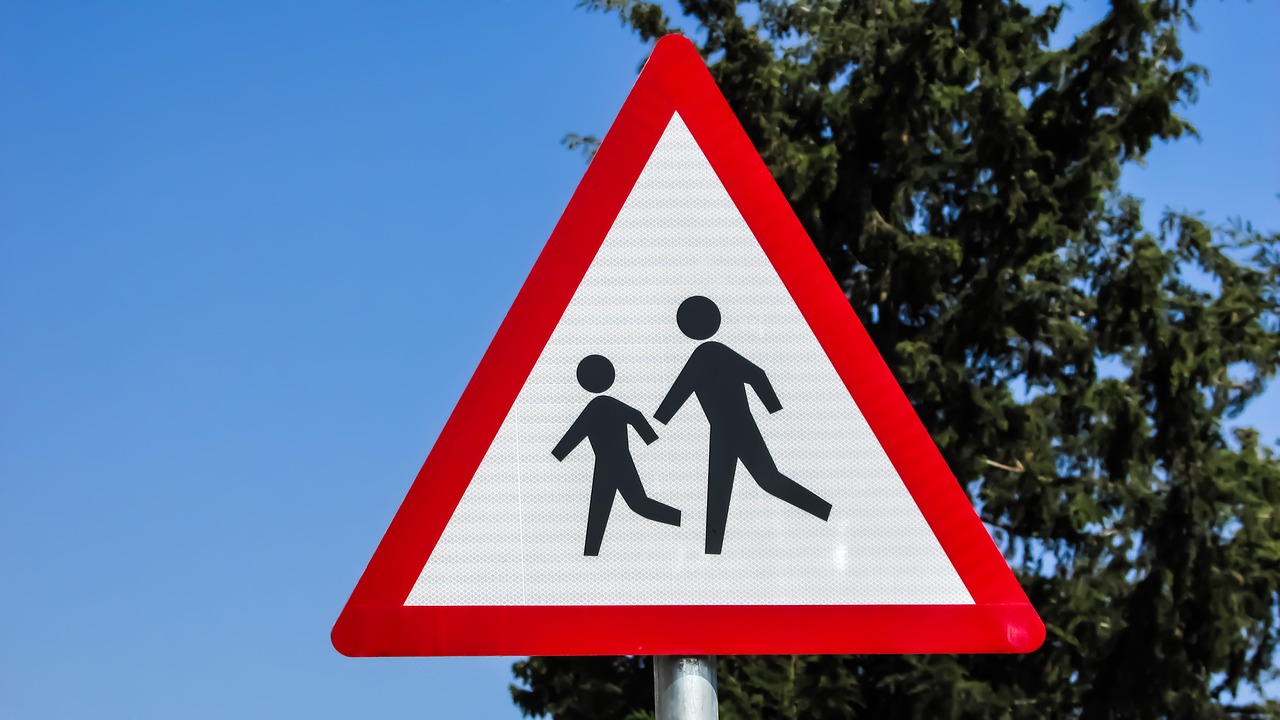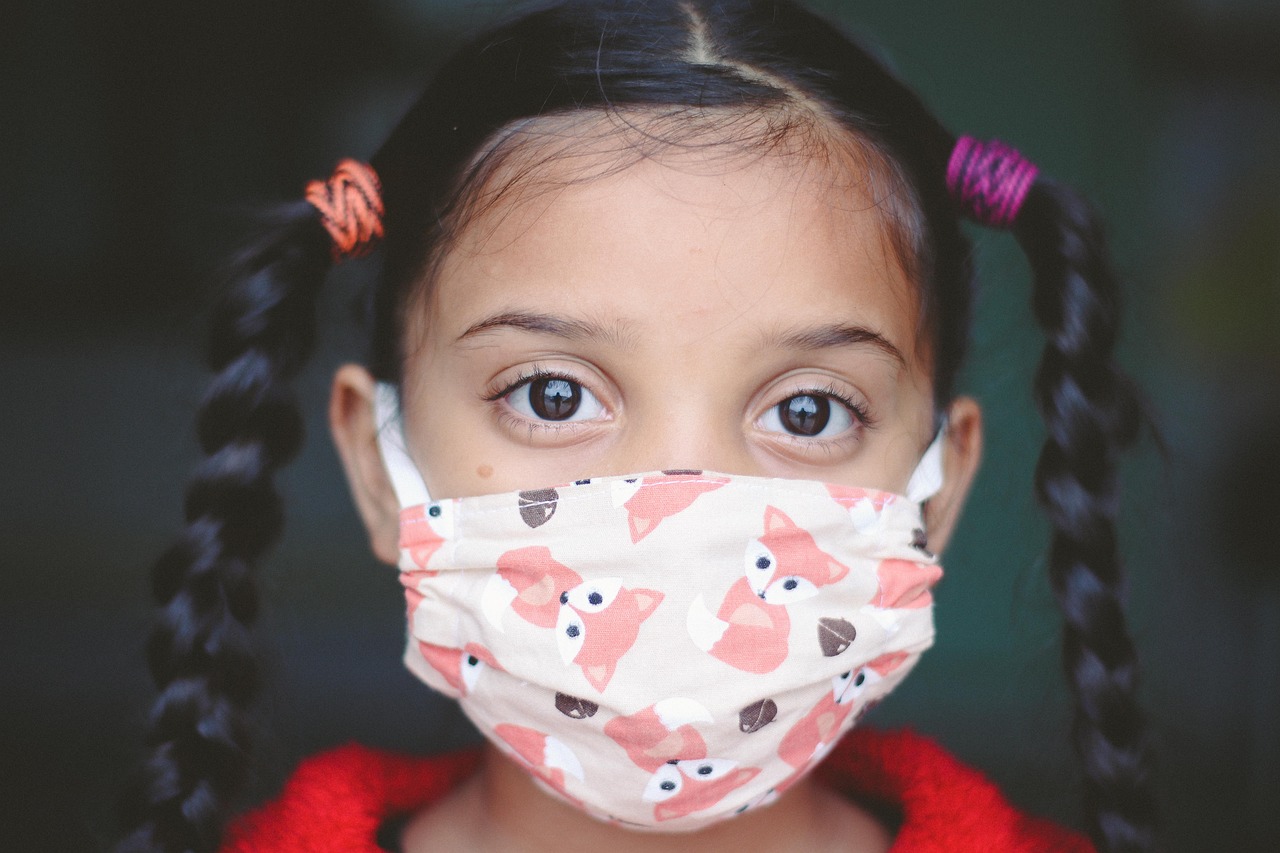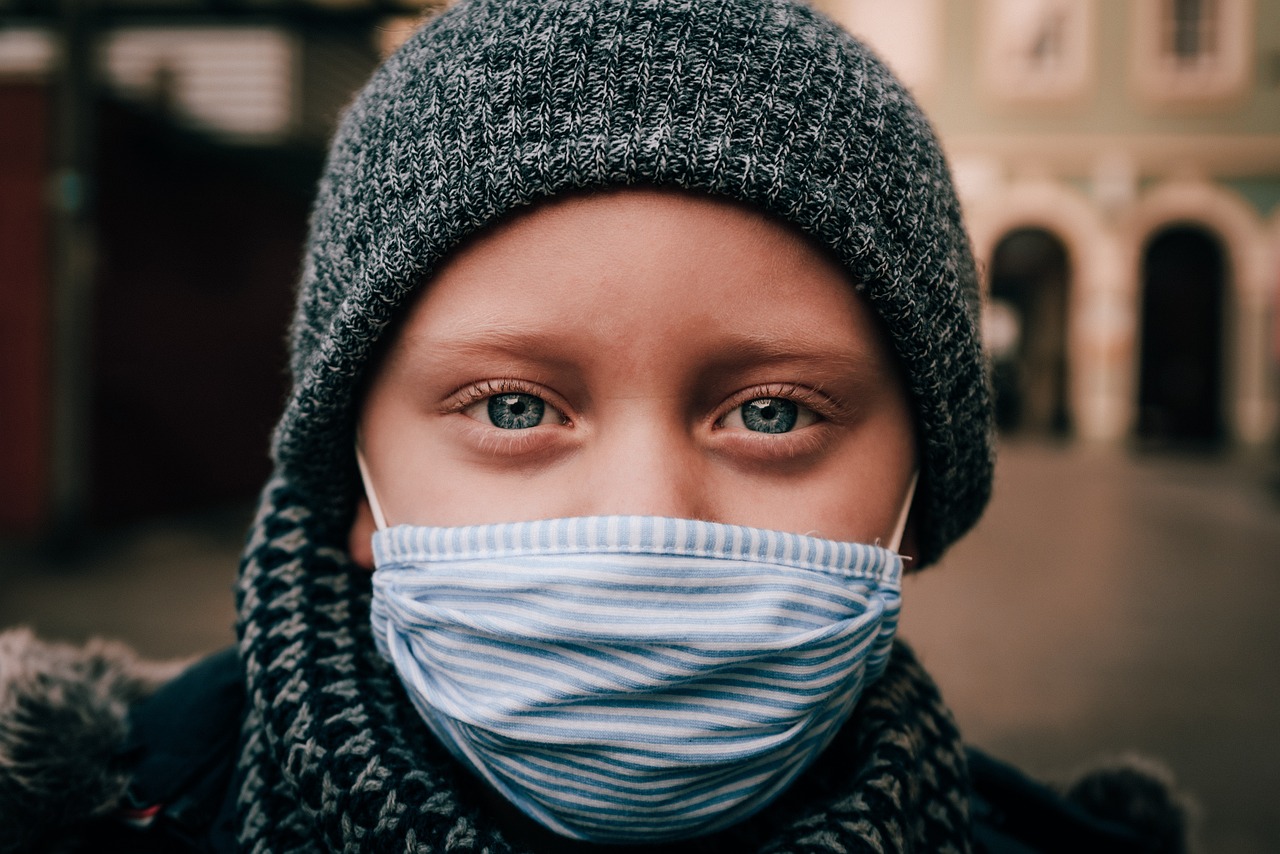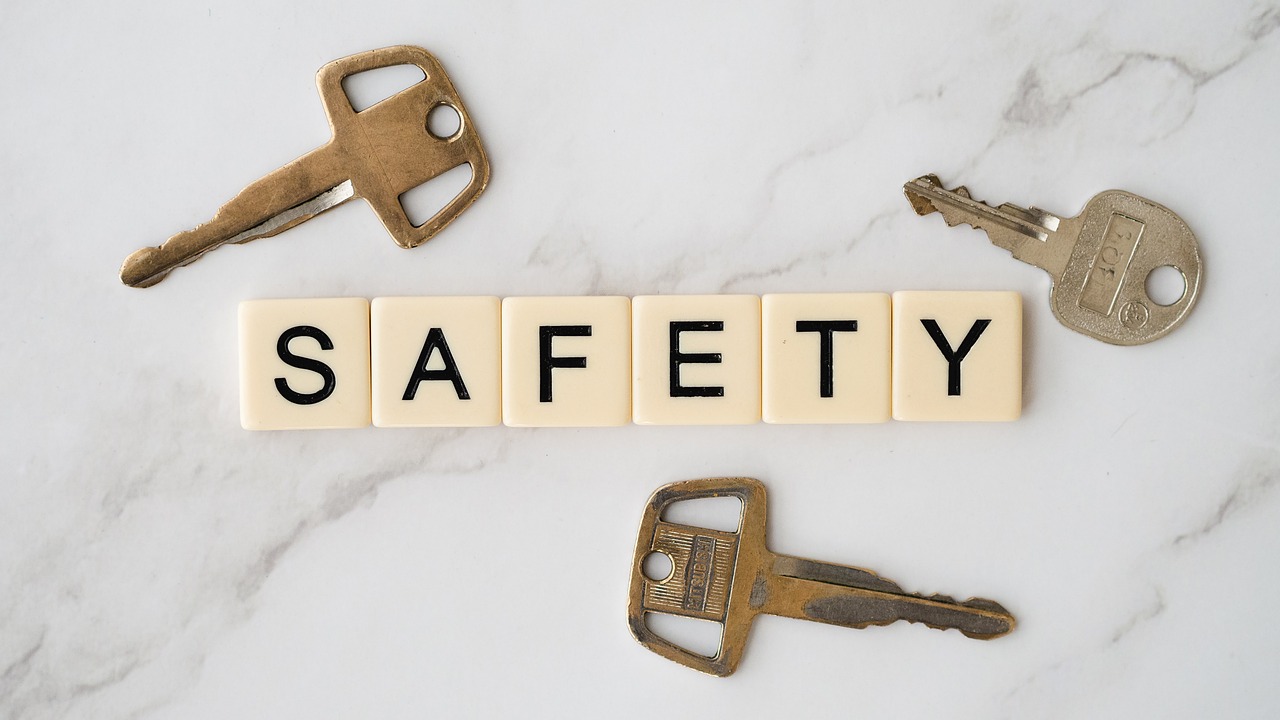The Age of Oversharing – Keeping Kids Safe Online
In today's digital landscape, where every moment can be broadcasted to the world with just a few taps on a screen, we find ourselves navigating the murky waters of oversharing. It's not just adults who are caught in this web; children are increasingly becoming the unwitting stars of their own online reality shows. Have you ever thought about what happens when a child shares too much on social media? The implications can be as vast as the internet itself, and the consequences can be dire. From privacy invasions to cyberbullying, the risks are real and ever-present. This article dives deep into the challenges of protecting our children in an era where personal information is frequently shared online, emphasizing the importance of digital safety and awareness.
Understanding the risks associated with oversharing personal information online is crucial for both parents and children. The internet is a double-edged sword; while it offers incredible opportunities for connection and learning, it also presents a myriad of threats. When children disclose too much about themselves on social media platforms, they expose themselves to potential dangers such as identity theft, predatory behavior, and cyberbullying. Imagine a child posting a picture of their school uniform along with the name of their school and their location. This seemingly innocent act can make them an easy target for those with malicious intent.
Moreover, the digital footprint left behind can haunt them for years to come. Once something is shared online, it can be nearly impossible to completely erase it. This permanence can lead to future consequences, impacting their personal and professional lives. Thus, it becomes imperative for parents to educate their children about the importance of maintaining their privacy and being cautious about what they share online.
Effective communication between parents and children about online safety is essential. The digital world is ever-evolving, and staying ahead of the game requires an ongoing dialogue. Parents should strive to create an environment where children feel comfortable discussing their online experiences. This means fostering open conversations about the dangers of oversharing, the importance of privacy settings, and the potential repercussions of their online actions. Have you sat down with your child to talk about their social media habits lately? If not, now's the perfect time!
Setting clear guidelines for internet use can help children navigate online spaces safely. Establishing a family agreement regarding acceptable online behavior and sharing practices can serve as a solid foundation. Here are some tips for creating those ground rules:
- Limit Sharing: Encourage children to think twice before posting personal information.
- Privacy First: Make it a habit to check privacy settings regularly.
- Time Management: Set boundaries on the amount of time spent online.
Keeping an eye on children's online interactions can prevent oversharing. Parents can use tools and apps designed to monitor social media use while respecting their child's privacy. It's about finding a balance—being involved without being intrusive. Open discussions about why monitoring is necessary can help children understand that it's not about distrust but rather about ensuring their safety.
Teaching children to think critically about what they post online can significantly reduce risks. Encourage them to ask themselves questions like, "What could happen if I share this?" or "Who might see this information?" By instilling a sense of responsibility and awareness, children can learn to evaluate the potential consequences of sharing personal information, much like a tightrope walker carefully considering each step.
Understanding and configuring privacy settings on social media is vital for protecting children's information. Most platforms offer robust privacy features that can be tailored to suit individual needs. Parents should take the time to educate themselves and their children on how to navigate these settings effectively. For instance, ensuring that profiles are set to private can drastically reduce the visibility of personal information to strangers.
Educating children about digital footprints and the permanence of online content is essential. Schools play a pivotal role in this education. Integrating internet safety education into school curricula can help create a generation of digitally savvy individuals who understand the implications of their online actions. Imagine a classroom where children are not just learning about math and science but are also being equipped with the knowledge to navigate the digital world safely.
Community workshops and online resources can empower families with knowledge. Many organizations offer programs aimed at teaching children and parents about safe online practices. Participating in these workshops can provide valuable insights and practical strategies for maintaining online safety. It’s like having a toolkit at your disposal—one that you can use to build a secure digital environment for your family.
Partnerships between parents and educators can strengthen online safety initiatives. Schools can play a pivotal role in educating students about the implications of oversharing. By working together, parents and teachers can create a comprehensive approach to online safety that extends beyond the classroom. This collaboration can lead to more informed and responsible digital citizens, ultimately fostering a safer online community for everyone.
Q: What is oversharing?
A: Oversharing refers to the act of sharing too much personal information online, which can lead to privacy risks and potential dangers.
Q: How can I talk to my child about online safety?
A: Start an open dialogue about their online experiences and establish clear guidelines for acceptable behavior.
Q: Are there tools to help monitor my child's online activity?
A: Yes, there are various apps and tools available that allow parents to monitor social media use while respecting privacy.

The Dangers of Oversharing
In today's digital world, the concept of oversharing has taken on a whole new meaning, especially for our children. With the rise of social media platforms, kids are often encouraged to share their lives in real-time, but this can lead to some serious consequences. Imagine a world where every moment of your life is broadcasted to an audience—friends, family, and even strangers. Sounds exciting, right? But what happens when that excitement turns into vulnerability?
When children disclose too much personal information online, they expose themselves to a range of potential threats. These threats can include cyberbullying, identity theft, and even predatory behavior. For instance, a seemingly harmless post about a child’s favorite hangout spot can alert a predator to their location, putting them at risk. It's vital for parents to understand these dangers and take proactive steps to educate their children about the implications of their online actions.
Moreover, the permanence of online content is another significant danger. Once something is posted, it can be challenging to erase it completely. This means that an impulsive post made in the heat of the moment could haunt a child for years to come. Colleges and employers often search for candidates online, and an inappropriate photo or comment could tarnish a child's reputation before they even get a chance to shine.
Here are some potential dangers associated with oversharing:
- Cyberbullying: Sharing personal thoughts and feelings can make children targets for bullies.
- Privacy Invasion: Personal information can be misused by others, leading to harassment or stalking.
- Identity Theft: Sharing details like birthdates, addresses, and school names can make children vulnerable to identity theft.
- Social Isolation: Oversharing can lead to negative attention, causing children to feel isolated and anxious.
In essence, the dangers of oversharing are not just hypothetical; they are very real and can have lasting impacts on a child's life. It's crucial for parents to engage in conversations about online safety, helping their children to understand the importance of maintaining a healthy level of privacy. After all, while sharing can be fun, protecting one's personal information is essential for navigating the digital landscape safely.

Parental Guidance and Communication
In today's digital landscape, where children are often just a click away from sharing their lives with the world, effective communication between parents and children about online safety has never been more essential. It's like navigating a vast ocean; without a compass, one can easily drift into dangerous waters. Parents must take the helm and guide their children through the complexities of the internet, ensuring they understand the potential pitfalls of oversharing. Open dialogues about the risks associated with sharing personal information can empower children to make informed decisions, much like teaching them to swim before they dive into the deep end.
One of the most impactful ways to foster this communication is by creating a safe space where children feel comfortable discussing their online experiences. Encourage them to share what they see and do online, and ask questions that prompt critical thinking. For instance, instead of simply asking, "What did you post today?" consider asking, "How do you think your friends might react to that post?" This not only opens the conversation but also helps children reflect on their actions and the potential consequences.
Establishing ground rules for internet usage can also play a significant role in guiding children. Just like a family agreement for household chores, a digital agreement can outline acceptable online behavior. This might include:
- What types of information are safe to share
- Who they can share information with
- Time limits for social media usage
By setting these expectations, parents provide a framework that helps children navigate the online world safely. It's crucial to revisit these rules regularly, adapting them as children grow and technology evolves. After all, what was considered safe a few years ago may not hold true today.
Another key aspect of parental guidance is monitoring online activity. However, it's essential to strike a balance between keeping an eye on their interactions and respecting their privacy. Think of it as being a lifeguard at the pool: you're there to ensure their safety, but you don’t want to hover so closely that they feel stifled. Tools like parental control apps can help parents monitor their children's social media use while allowing for a degree of independence. This way, children can learn to make choices while knowing their parents are there for support if needed.
Finally, teaching children to think critically about their online presence is paramount. Encourage them to pause and ask themselves questions before posting. For example, "Would I be comfortable if my teacher or future employer saw this?" This kind of critical thinking can help them recognize the permanence of their digital footprint and the potential repercussions of oversharing. Just as we teach them to look both ways before crossing the street, instilling this mindset can help them navigate the online world more safely.
In summary, parental guidance and communication are vital in helping children understand the complexities of the digital age. By fostering open dialogues, establishing ground rules, monitoring online activity, and encouraging critical thinking, parents can equip their children with the necessary tools to navigate the internet safely. It's a continuous journey, but with the right approach, parents can help their children thrive in this age of oversharing.
Q: How can I start a conversation about online safety with my child?
A: Begin by sharing your own experiences with technology and asking open-ended questions about their online activities. This helps create a comfortable environment for discussion.
Q: What are some signs that my child may be oversharing online?
A: Look for changes in their behavior, such as becoming secretive about their devices or showing signs of anxiety when discussing social media.
Q: Should I use parental control apps?
A: Yes, they can be helpful tools for monitoring your child's online activity while allowing them some independence. Just ensure to discuss the purpose of these tools with your child.
Q: How often should we revisit our family's internet usage rules?
A: Regular check-ins, at least every few months, can help ensure that the rules remain relevant and effective as technology evolves.

Establishing Ground Rules
Setting the stage for a safe online experience begins with that everyone in the family can agree upon. Think of these rules as a digital safety net, designed to catch your children before they fall into the pitfalls of oversharing. Just like you wouldn’t let your kids wander into a crowded mall without a plan, they shouldn’t navigate the vast world of the internet without clear guidelines. So, what should these rules entail?
First and foremost, it's essential to have an open conversation about what constitutes acceptable online behavior. This means discussing the types of information that are safe to share and what should remain private. For example, children should understand that sharing their full name, home address, or school name can lead to dangerous situations. To make this easier, consider creating a simple list of do's and don'ts:
- Do: Share fun moments, like a family outing or a birthday party, without revealing personal details.
- Don't: Post anything that could identify your location, such as your home or school.
- Do: Ask for permission before sharing photos of friends or family.
- Don't: Engage with strangers or accept friend requests from unknown individuals.
Next, it's crucial to create a family agreement regarding internet use. This agreement can be a simple document that outlines the rules and expectations for online behavior, including the amount of time allowed on social media and the types of platforms that are acceptable. Make it a fun activity by involving your kids in the drafting process. This way, they’ll feel more invested in the rules and understand their importance.
Additionally, it’s vital to establish consequences for breaking these rules. Just like in any other aspect of life, having clear repercussions helps children understand the seriousness of their online actions. Whether it’s a temporary suspension from using social media or having to complete an extra chore, the consequences should be reasonable and consistent.
Finally, remember that these ground rules should be flexible and evolve as your child grows. What works for a 10-year-old may not be suitable for a teenager. Regularly revisiting and revising these rules can help keep the lines of communication open and ensure that your children feel comfortable discussing their online experiences with you.
In conclusion, establishing ground rules is not just about limiting your child’s freedom; it’s about empowering them to make safe choices in a world that can sometimes feel overwhelming. By fostering a culture of open dialogue and mutual respect, you’re not only keeping your children safe but also teaching them valuable skills that will serve them well into adulthood.
Q: How can I make sure my child understands the importance of online privacy?
A: Engage them in discussions about real-life scenarios that illustrate the risks of oversharing. Use examples from news stories or even fictional situations to make it relatable.
Q: What if my child resists the ground rules?
A: It’s important to listen to their concerns and involve them in the conversation. Adjusting the rules together can foster a sense of ownership and responsibility.
Q: Are there any tools to help monitor my child’s online activity?
A: Yes! There are various parental control apps available that can help you monitor your child’s online behavior while respecting their privacy.
Q: How often should we revisit our family internet agreement?
A: Aim to review it at least once a year or whenever there’s a significant change in your child’s online habits or maturity level.

Monitoring Online Activity
In today's digital landscape, where children are often just a click away from sharing their lives with the world, has become a crucial aspect of ensuring their safety. It's not about invading their privacy; rather, it's about guiding them through the often murky waters of the internet. Think of it as being their lighthouse in a stormy sea, helping them navigate potential dangers while still allowing them the freedom to explore. But how can parents effectively keep an eye on their children's online interactions without crossing the line into excessive surveillance?
First and foremost, open communication is key. Establishing a trusting relationship with your child will make them more receptive to discussions about their online activities. Ask them about their favorite apps, the friends they chat with, and the content they enjoy. This not only gives you insight into their digital world but also opens the door for them to share any concerns they might have. Remember, kids are more likely to come to you if they feel you’re genuinely interested in their experiences.
Another effective strategy is to utilize parental control tools. These tools can help you monitor your child's online behavior while respecting their privacy. For instance, many software options allow you to see which sites they visit, how much time they spend online, and even what they post on social media. However, it's important to use these tools transparently. Discuss with your child why you feel it's necessary to monitor their activity, and reassure them that this is a protective measure, not a punishment. Here’s a quick overview of some popular parental control options:
| Parental Control Tool | Features | Age Suitability |
|---|---|---|
| Net Nanny | Web filtering, time management, alerts | All ages |
| Qustodio | Monitoring calls & texts, app blocking | 10+ |
| Circle Home Plus | Internet pause, usage tracking | All ages |
Additionally, consider setting up shared accounts for platforms like social media or gaming. This way, you can keep tabs on their interactions without being overly intrusive. You might even find it helpful to join them in their online activities. Play their favorite games or engage with their posts—this not only allows you to monitor but also strengthens your bond with them. Plus, it gives you a chance to teach them about responsible sharing and the importance of maintaining privacy.
Lastly, remind your child about the importance of being cautious online. Encourage them to think before they click or share. A simple rule of thumb can be, "If you wouldn’t say it to someone’s face, don’t say it online." By instilling this mindset, you empower them to make wise decisions regarding their online presence. Monitoring online activity is not just about keeping tabs; it's about fostering a safe and supportive environment where children can thrive in the digital age.
- How can I start a conversation about online safety with my child? Begin by asking them about their favorite online activities and expressing genuine interest in their digital life.
- Are parental control apps effective? Yes, they can be very effective when used transparently and in conjunction with open communication.
- What should I do if my child encounters something inappropriate online? Stay calm, listen to their concerns, and discuss what they saw and how they felt about it. Use it as a teachable moment.
- How often should I monitor my child's online activity? It's best to keep a regular check without being intrusive. Establish a routine that feels comfortable for both you and your child.

Encouraging Critical Thinking
In today's digital landscape, where every click can leave a mark, it’s essential to encourage critical thinking in children regarding their online presence. Teaching kids to think critically about what they post online is not just beneficial; it's a necessity. Imagine your child standing at a crossroads, with one path leading to potential risks and the other to safety. By fostering critical thinking, we equip them with the tools to choose wisely.
One of the first steps in encouraging this mindset is to engage in open conversations about the consequences of oversharing. Ask your child questions like, “What do you think could happen if you share your location on social media?” or “How would you feel if someone used your photo without your permission?” These questions prompt them to reflect on their actions and understand the implications of their online behavior.
Additionally, it’s important to help them recognize the difference between private and public information. You can create scenarios together, discussing what kind of information is safe to share and what should remain private. For example, explain that sharing their school name and address could lead to unwanted attention, while sharing a favorite hobby is generally harmless. This distinction is crucial in helping children navigate the vast online world.
Moreover, you can introduce the concept of a digital footprint. Explain that everything they post online contributes to their digital identity, which can affect their future opportunities, such as college admissions or job prospects. To illustrate this, consider using a table like the one below:
| Type of Post | Potential Impact |
|---|---|
| Personal Photos | Could be misused or lead to cyberbullying |
| Location Check-ins | May attract unwanted attention or stalkers |
| Negative Comments | Can damage reputation and relationships |
| Positive Achievements | Enhances reputation and showcases talents |
Encouraging critical thinking also means teaching children to question the intentions behind the content they see online. Are the influencers they follow promoting healthy lifestyles, or are they setting unrealistic expectations? By analyzing the motives behind social media posts, children can develop a more discerning eye, allowing them to engage with content that aligns with their values.
Finally, remind your children that they have the power to control their online narrative. Encourage them to think before they post, and to ask themselves: “Is this something I would be comfortable sharing with my family or future employers?” This simple mental checklist can significantly reduce the chances of oversharing and help them maintain a positive online presence.
In conclusion, fostering critical thinking in children about their online activities is like giving them a compass in a digital wilderness. By teaching them to reflect on their actions, understand their digital footprint, and question the content they consume, we can help them navigate the complexities of the online world safely and responsibly.
- What is the best age to start discussing online safety with my child?
It's never too early to start! Begin age-appropriate conversations as soon as they start using devices. - How can I monitor my child's online activity without invading their privacy?
Use tools that allow you to see their activity while encouraging open discussions about their online experiences. - What are some signs my child may be oversharing online?
Look for changes in behavior, such as being secretive about their online activity or expressing anxiety about their posts.

Utilizing Privacy Settings
In today's digital landscape, where sharing personal information has become second nature, understanding and utilizing privacy settings on social media platforms is crucial for protecting children. It's like having a security system for your home; without it, you're leaving the door wide open for unwanted visitors. Privacy settings act as that security system, allowing parents and children to control who can see their information and what they can share.
Many social media platforms offer robust privacy features, but they often go unnoticed or unutilized. For instance, Facebook, Instagram, and Snapchat all provide options to make profiles private, restrict friend requests, and limit who can view posts. However, the challenge lies in navigating these settings effectively. Parents should take the initiative to walk their children through these features, ensuring they understand how to customize their privacy settings according to their comfort levels. This not only helps in safeguarding their personal information but also empowers them to take charge of their online presence.
To illustrate the importance of privacy settings, consider the following example: Imagine a child who shares a seemingly innocent photo at a birthday party, tagging friends and family members. If their profile is public, that photo can be seen by anyone on the internet. This opens the door to various risks, from unwanted attention to potential cyberbullying. By adjusting privacy settings, the child can control who sees that photo, keeping it within a trusted circle.
Here are some key privacy settings that every parent should discuss with their children:
- Profile Privacy: Ensure that the child's profile is set to private so that only approved friends can see their posts.
- Friend Requests: Teach children to only accept friend requests from people they know personally.
- Post Visibility: Encourage them to customize the audience for each post, choosing between friends, friends of friends, or public.
- Location Sharing: Remind children to turn off location tagging in their posts and photos to protect their whereabouts.
Moreover, it's essential to revisit these settings regularly. Social media platforms frequently update their features, and what was once a secure setting might change. By staying informed and proactive, parents can help their children navigate the ever-evolving digital landscape.
In conclusion, utilizing privacy settings is not just a one-time task; it's an ongoing conversation between parents and children. By fostering an environment where discussing online safety is normalized, families can work together to create a safer digital experience. Remember, the goal is to empower children with the knowledge and tools they need to protect themselves online, making them not just passive users but informed digital citizens.
- What are privacy settings? Privacy settings are features on social media platforms that allow users to control who can see their information and how it is shared.
- Why should I care about privacy settings? Privacy settings are essential for protecting personal information and ensuring that only trusted individuals can view your content.
- How often should I check privacy settings? It's advisable to check privacy settings regularly, especially after updates to the platform or changes in your social circle.
- Can children change their privacy settings? Yes, children can and should be encouraged to take an active role in managing their privacy settings with guidance from their parents.

The Role of Education
In today's digital landscape, where information travels at lightning speed, educating children about their online presence has never been more crucial. With the rise of social media and the prevalence of smartphones, kids are often exposed to a world where oversharing is the norm. This makes it imperative for educators and parents to come together to teach children the significance of maintaining their digital privacy. After all, the internet is not just a playground; it’s a permanent record of their lives that can follow them into adulthood.
One of the key aspects of this education is understanding what a digital footprint is. Every post, comment, and photo shared online contributes to a child's digital identity. It’s essential for them to realize that the internet never forgets, and what seems harmless today could have repercussions in the future. Schools play a critical role by integrating internet safety education into their curricula. This can be achieved through various methods:
- Interactive Workshops: Engaging students in hands-on activities can help them grasp the concept of digital footprints and the importance of privacy settings.
- Real-Life Scenarios: Discussing case studies or news stories about the consequences of oversharing can provide relatable insights.
- Collaborative Projects: Encouraging group discussions or projects on online safety can foster a sense of community and shared responsibility among students.
Moreover, schools can utilize technology to enhance learning. For instance, using educational apps that simulate social media platforms can provide a safe space for students to practice making decisions about what to share and what to keep private. By using these tools, educators can create a dynamic learning environment that emphasizes the importance of thoughtful engagement with online content.
In addition to formal education, schools can also collaborate with parents to reinforce these lessons at home. Parent-teacher meetings can include discussions on how to maintain a safe online environment for children, and resources can be shared to help parents understand the tools available for monitoring their child’s online behavior. This partnership can create a holistic approach to digital safety, ensuring that children receive consistent messages about the importance of privacy and responsible sharing.
As we navigate this age of oversharing, it’s clear that education is a powerful tool. By equipping children with the knowledge and skills they need to protect themselves online, we are not only safeguarding their present but also their future. Let’s empower the next generation to make informed choices in their digital lives!
Q: Why is it important to teach children about digital footprints?
A: Teaching children about digital footprints helps them understand the long-term implications of their online actions, encouraging them to think critically about what they share.
Q: How can parents reinforce online safety education at home?
A: Parents can discuss online experiences with their children, set clear guidelines for internet use, and utilize parental control tools to monitor online activity.
Q: What role do schools play in online safety education?
A: Schools can integrate internet safety into the curriculum, provide resources for both students and parents, and foster a collaborative environment for discussing online safety.

Workshops and Resources
In today's digital landscape, where children are constantly interacting with technology, educational workshops and resources play a pivotal role in promoting online safety. These initiatives not only empower children but also equip parents with the necessary tools to navigate the complex world of social media and online sharing. Imagine a world where every child understands the implications of their digital footprints, much like knowing the importance of locking the front door before leaving the house. This is where workshops come into play.
Many organizations and schools are increasingly offering workshops that focus on internet safety, digital citizenship, and the consequences of oversharing. These sessions often include interactive activities, discussions, and real-life scenarios that engage children and make the learning process enjoyable. For instance, a workshop might simulate a social media platform where participants must decide what information is safe to share and what should remain private. This hands-on approach helps solidify the lessons learned.
Moreover, various online resources are available for both parents and children, providing valuable information about safe online practices. Websites dedicated to internet safety often feature articles, videos, and quizzes that make learning fun and informative. Here are some key resources:
- Common Sense Media: Offers reviews and advice on media and technology for families.
- NetSmartz: Provides resources for parents and educators to teach children about online safety.
- StopBullying.gov: Focuses on preventing bullying, including cyberbullying, and offers guidance for parents and kids.
In addition to these resources, community centers and libraries frequently host workshops that bring families together to discuss online safety. These gatherings not only foster a sense of community but also encourage parents to share their experiences and strategies. By collaborating with local organizations, parents can create a support network that enhances their children's understanding of safe online behavior.
In conclusion, workshops and resources are essential in the fight against oversharing and the risks associated with it. They serve as a beacon of knowledge, guiding families through the murky waters of the internet. As we continue to embrace technology, let’s ensure that our children are equipped with the skills and awareness needed to protect themselves online.
Q1: What age should children start learning about online safety?
A1: It's never too early to start! Introducing basic concepts of online safety as early as age 5 can help children develop good habits.
Q2: Are there any costs associated with workshops?
A2: Many community workshops are free, while some may charge a nominal fee. It's best to check with local organizations for specific details.
Q3: How can I find workshops in my area?
A3: Searching online for local community centers, libraries, or schools that offer workshops on internet safety is a great start.
Q4: Can parents attend workshops with their children?
A4: Absolutely! Many workshops encourage parents to participate alongside their children to foster open discussions about online safety.

Collaborating with Schools
In today's digital age, the role of schools in promoting online safety cannot be overstated. As children spend more time online, it becomes imperative for educational institutions to step up and actively participate in teaching students about the potential dangers of oversharing. Schools have the unique opportunity to reach a large number of students and instill critical lessons about internet safety that can have lifelong benefits.
One effective way schools can contribute is by integrating digital literacy programs into their curricula. These programs should not only focus on the technical aspects of using the internet but also emphasize the social implications of online behavior. For example, students can learn about the concept of a digital footprint—the trail of data they leave behind when they use the internet. Understanding that this footprint is permanent can encourage them to think twice before sharing sensitive information.
Moreover, schools can organize workshops and seminars that involve parents, teachers, and students. These events can serve as platforms for discussing the risks associated with oversharing and the importance of maintaining privacy online. By bringing together the entire school community, these workshops can foster a culture of open communication about digital safety. Topics could include:
- The importance of strong passwords
- Recognizing phishing scams
- Understanding privacy settings on social media
- Identifying the signs of cyberbullying
Additionally, schools can collaborate with local organizations and tech companies to provide resources and training for both students and parents. By forming partnerships, schools can access expert knowledge and tools that can enhance their safety initiatives. For example, tech companies might offer software solutions that help monitor online activity, while local organizations could provide educational materials tailored to different age groups.
Ultimately, collaboration between parents and schools is essential for creating a safe online environment for children. Regular communication between these two parties can ensure that children receive consistent messages about online behavior. Schools should encourage parents to be involved in their children's online lives—this could be as simple as discussing what they do online or reviewing privacy settings together.
In conclusion, the partnership between parents and schools plays a crucial role in combating the challenges posed by oversharing. By working together, they can equip children with the knowledge and skills needed to navigate the digital world safely. After all, when it comes to online safety, it truly takes a village.
- What is oversharing? Oversharing refers to the act of disclosing too much personal information online, which can lead to privacy risks.
- How can I talk to my child about online safety? Start with open conversations, share your own experiences, and encourage them to ask questions about their online interactions.
- What should I do if I find my child oversharing? Address the issue calmly, explain the potential risks, and work together to establish better online habits.
- Are there apps that help monitor children's online activity? Yes, there are several parental control apps available that can help you keep track of your child's online behavior while respecting their privacy.
Frequently Asked Questions
- What is oversharing and why is it a concern for kids?
Oversharing refers to the act of disclosing too much personal information online, often on social media platforms. For kids, this is a major concern because it can expose them to various risks, including cyberbullying, identity theft, and unwanted attention from strangers. It's like leaving your front door wide open; you never know who might walk in!
- How can parents talk to their children about online safety?
Parents can initiate conversations about online safety by creating a comfortable environment where kids feel free to express their thoughts. Discussing real-life examples of oversharing and its consequences can help make the topic relatable. Think of it as teaching them to navigate a minefield; they need to know where the dangers lie!
- What are some effective ground rules for internet use?
Establishing ground rules can significantly enhance online safety. Some effective rules include limiting screen time, setting guidelines on what can be shared online, and requiring parental approval for new apps or social media accounts. It’s like setting up a safety net; it ensures they have boundaries while exploring the digital world.
- How can parents monitor their children's online activity without invading privacy?
Parents can use various tools and apps designed for monitoring online activity discreetly. Encouraging open discussions about what kids do online can also foster trust. It’s all about striking a balance; you want to keep them safe without making them feel like they’re under constant surveillance.
- Why is it important to teach kids about privacy settings on social media?
Teaching kids about privacy settings is crucial because it empowers them to control who sees their information. Understanding how to configure these settings can significantly reduce the risks associated with oversharing. It’s like giving them a shield; they can protect themselves better in the vast digital landscape.
- How can schools contribute to online safety education?
Schools can play a pivotal role by integrating internet safety into their curricula, offering workshops, and collaborating with parents to reinforce these lessons. When schools and families work together, it creates a stronger support system for kids, much like a team working towards a common goal!
- What resources are available for families to learn about online safety?
There are numerous resources available, including community workshops, online courses, and informative websites dedicated to digital safety. These platforms can provide valuable information and tools to help families navigate the complexities of online interactions. Think of them as treasure maps guiding you through the digital jungle!



















